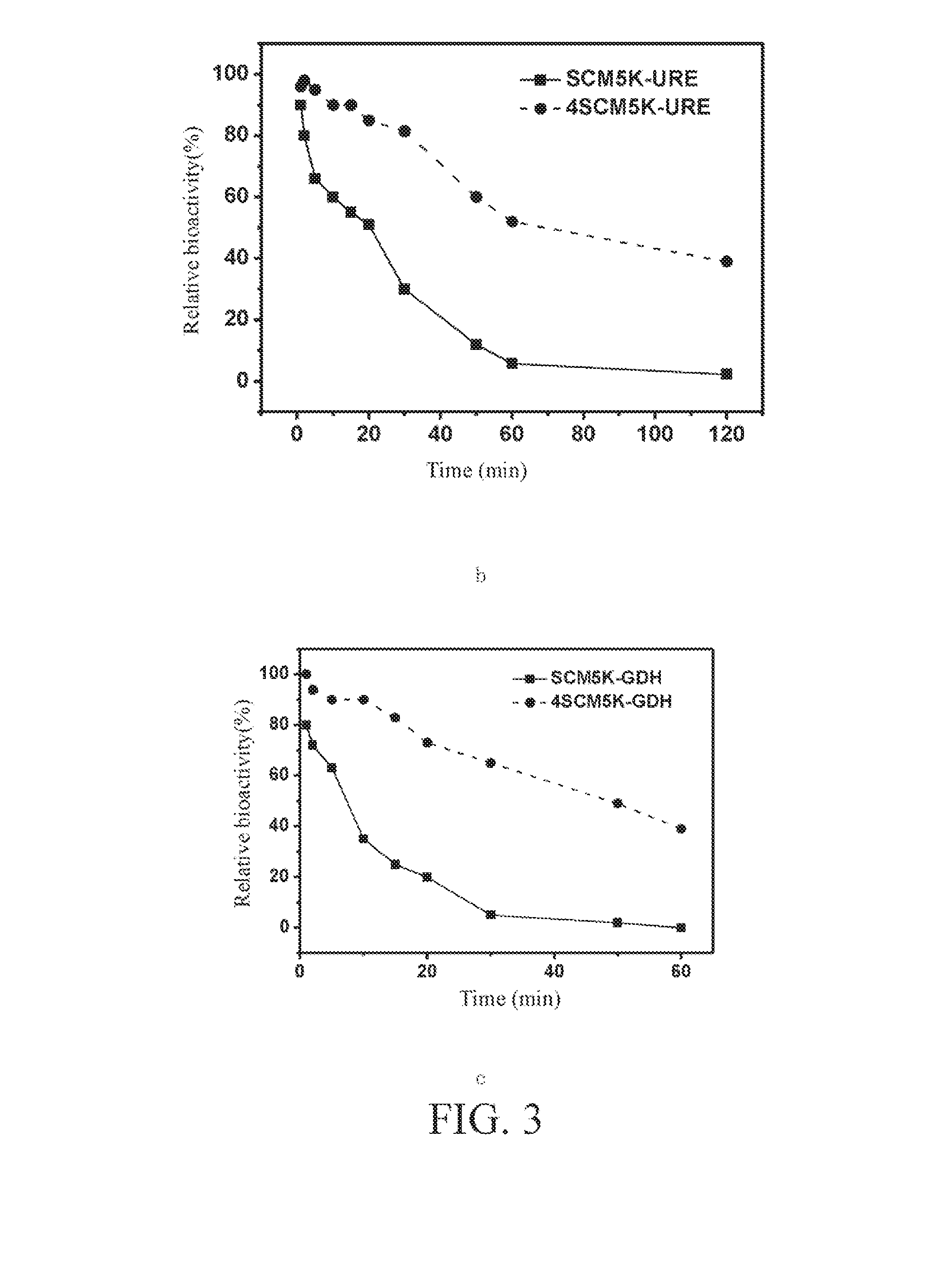Novel use of multi-arm polyethylene glycol modifier and application of multi-arm polyethylene glycol modifier in l-asparaginasum modification
a polyethylene glycol and modifier technology, applied in the field of multi-arm polyethylene glycol modifiers and asparaginase modification, can solve the problems of inability to precisely predict the pharmacokinetic behavior of a natural protein, the inability to use general-purpose peg modifiers and modification methods to modify all the protein drugs, and the inability to predict the pharmacokinetic behavior of a peg conjugate. prediction even less feasible, the effect of enhancing the interaction between the subunits
- Summary
- Abstract
- Description
- Claims
- Application Information
AI Technical Summary
Benefits of technology
Problems solved by technology
Method used
Image
Examples
example 1
Preparation and Analysis of PEG Conjugate of Asparaginase
preparation example 1
Preparation, Purification and Identification of the PEGylated Asparaginase According to the Present Invention
1. Preparation of PEG Conjugate Sample
[0085]The asparaginase (available from Qianhong Biopharma Co., Ltd and having a sequence as shown in SEQ ID NO: 1) was dissolved in a 50 mM acetic acid-sodium acetate buffer (pH 5.0) (available from Sinopharm Group) to formulate a 8 mg / mL solution, and then modified respectively with 4PALD5K and 4PALDIOK (available from Beijing Jiankai science and Technology Co. Ltd.) as a PEG modifier. The reaction was carried out at 4° C. for 12 hrs at a molar ratio of asparaginase:PEG modifier:reactant (sodium cyanoborohydride, available from Sigma) 1:50:2500, and then terminated with 1 M glycine.
[0086]Also, the asparaginase was dissolved in a 50 mM PB buffer (pH 7.5) (which was formulated with disodium hydrogen phosphate and sodium dihydrogen phosphate, and available from Sinopharm Group) to formulate a 8 mg / mL solution, and then modified respectively...
example 2
Preparation and Analysis of PEG Conjugates of Alkaline Phosphatase, Urease and Glutamate Dehydrogenase
[0095]Alkaline phosphatase (AKP) is an enzyme that is widely distributed in various organs of human and can dephosphorylate a corresponding substrate. AKP removes the phosphate group on the substrate molecule by hydrolyzing phosphoric acid monoester, to produce phosphate ions and free hydroxyl groups. The substrate includes nucleic acids, proteins, and alkaloids. AKP is a homologeous dimeric protein, in which each subunit has a molecular weight of 28 kDa.
[0096]The monomeric Hp urease is a hexamer composed of the subunits A and B, in which the molecular weights of the subunits A and B are about 30 kDa and 64 kDa respectively, and the ratio is 1:1. In this example, the urease used is a monomeric protein formed of the subunits A and B that cannot form a 6 mer.
[0097]Glutamate dehydrogenase can catalyze the deamination of glutamate to produce α-ketoglutarate and ammonia, and is the only ...
PUM
| Property | Measurement | Unit |
|---|---|---|
| molecular weight | aaaaa | aaaaa |
| molecular weight | aaaaa | aaaaa |
| molecular weight | aaaaa | aaaaa |
Abstract
Description
Claims
Application Information
 Login to View More
Login to View More - R&D
- Intellectual Property
- Life Sciences
- Materials
- Tech Scout
- Unparalleled Data Quality
- Higher Quality Content
- 60% Fewer Hallucinations
Browse by: Latest US Patents, China's latest patents, Technical Efficacy Thesaurus, Application Domain, Technology Topic, Popular Technical Reports.
© 2025 PatSnap. All rights reserved.Legal|Privacy policy|Modern Slavery Act Transparency Statement|Sitemap|About US| Contact US: help@patsnap.com



